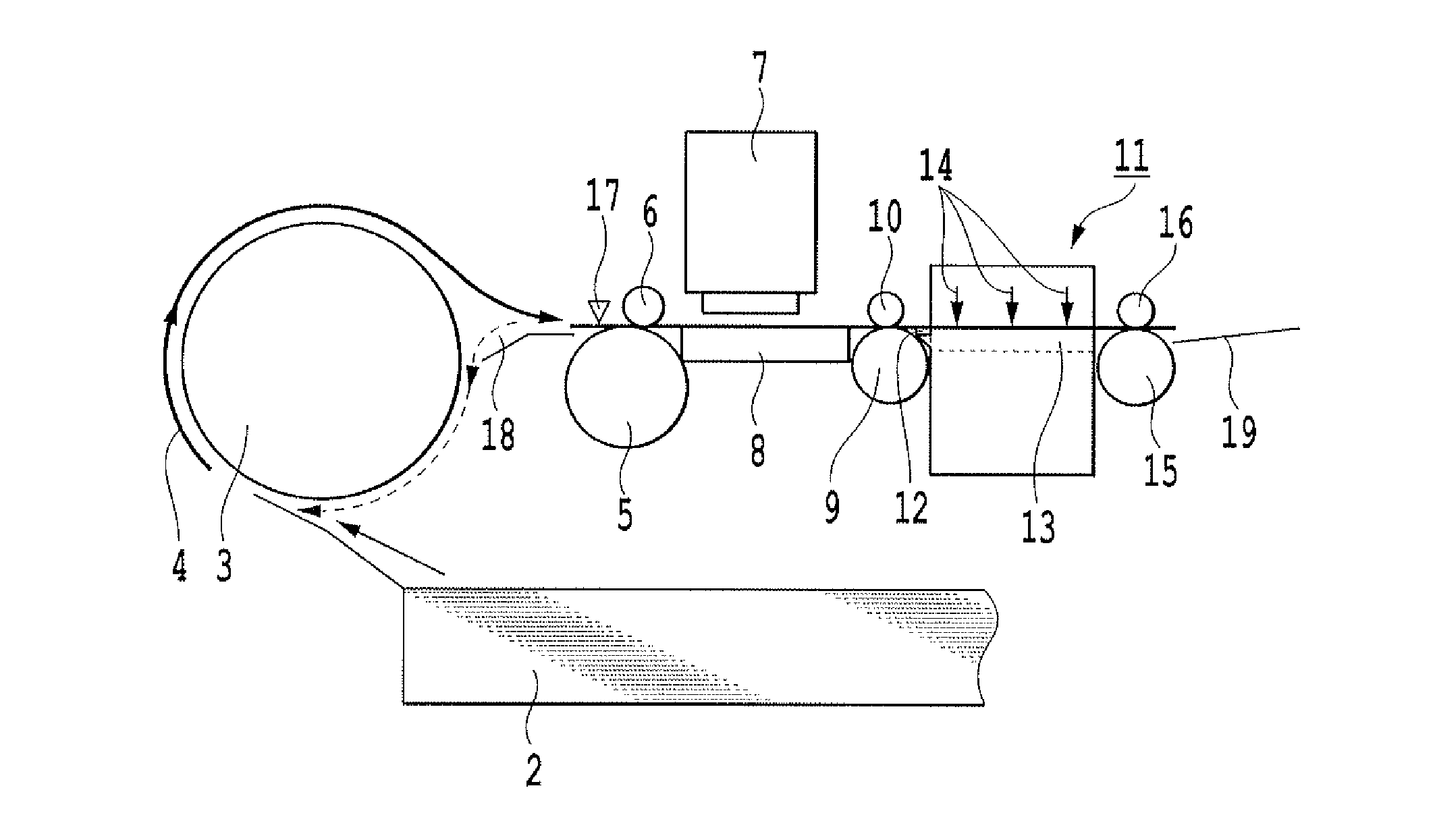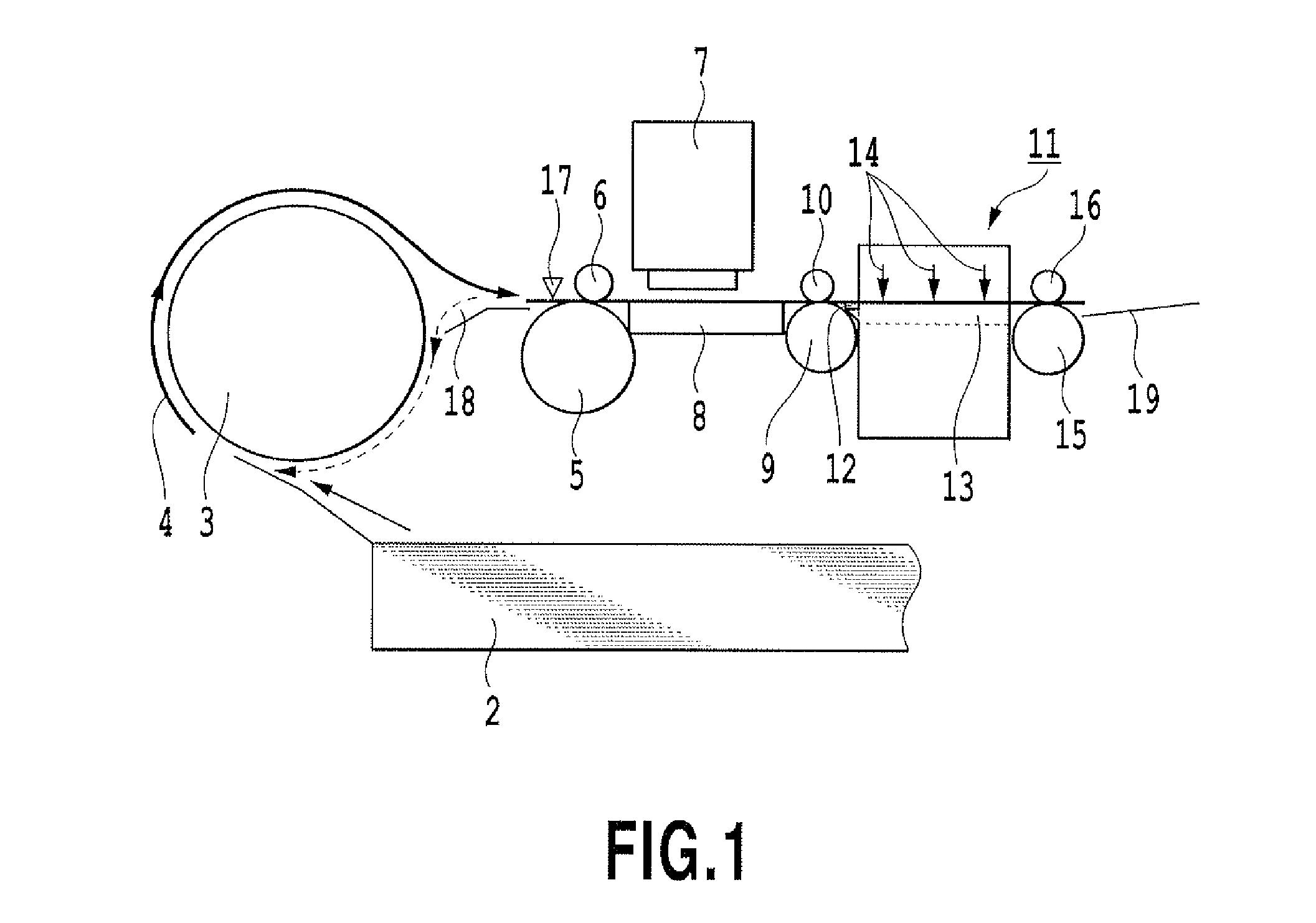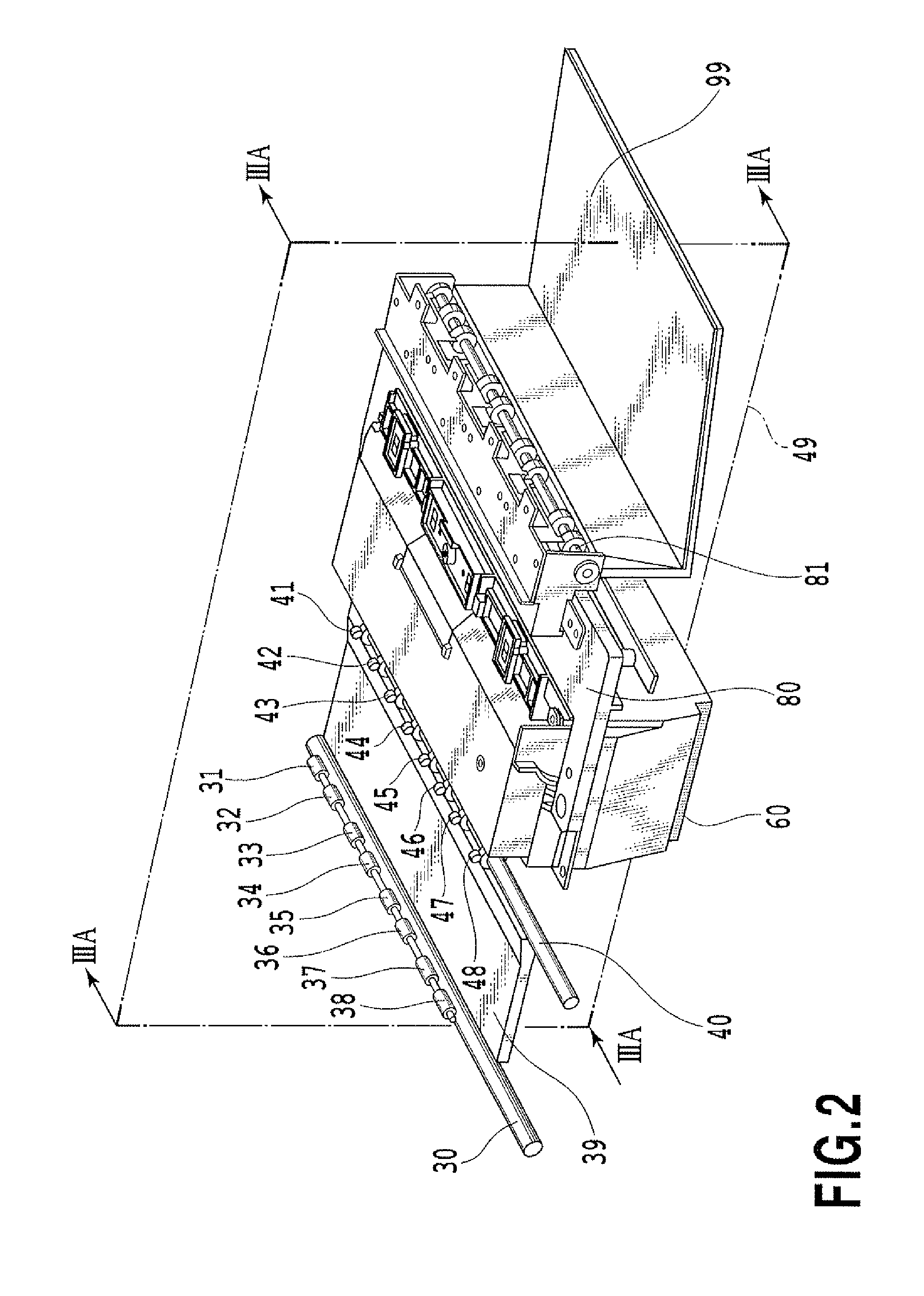Printing apparatus and inkjet method
a printing apparatus and inkjet technology, applied in the field of inkjet printing, can solve the problems of large amount of evaporated ink, increased marked increase in humidity in the hot air, so as to improve the drying ability and improve the drying efficiency of ink.
- Summary
- Abstract
- Description
- Claims
- Application Information
AI Technical Summary
Benefits of technology
Problems solved by technology
Method used
Image
Examples
embodiment 1
[0031]FIG. 1 is a schematic view of the inkjet printing apparatus according to a first embodiment of the present invention, and in particular the structure along the print medium conveyance path. It should be noted that the present invention can also be applied in printing apparatuses other than inkjet type apparatuses, in which drying of the print medium after printing is necessary for fixation.
[0032]In FIG. 1 the print medium is a cut sheet, which can be set to a maximum of 250 sheets inside a sheet feeding cassette 2, and is picked up and fed one sheet at a time by a sheet feeding roller and separation mechanism (not shown). A U-turn conveying unit 3 conveys, along with an unshown conveyance roll, the print medium in the direction shown by the arrowed line 4. The U-turn conveying unit 3 also functions as a double-side inversion unit, as described later. The print medium, which is conveyed along the direction of the arrow 4, is held between a LF roller 5 and a pinch roller 6, and ...
embodiment 2
[0069]In the first embodiment described above the temperature of the silicon rubber heater is measured by a preheating temperature sensor (thermistor), and based on this measured temperature, the temperature of the print medium passing over the silicon rubber heater is specified and acquired by experiment. In contrast to this, in a second embodiment of the present invention, without providing a sensor that measures the temperature of the silicon rubber heater, a sensor is provided that directly measures the temperature of the silicon rubber heater or the temperature of the print medium conveyed over it. Only the configuration of this print medium temperature detection that differs will be explained below.
[0070]FIG. 13A is a perspective view that illustrates the fixation unit of a second embodiment of the present invention, and FIG. 13B is a perspective view of the top cover unit 300 of the fixation unit, viewed from the lower side. In these figures the top cover 302 has an analogous...
embodiment 3
[0075]The above described first and second embodiments provide a mechanism that detects the temperature and humidity of the hot air, and the temperature of the preheater (the silicon rubber heater). However, even without detecting the temperature of the preheater or the print medium it is possible to control the temperature of the preheater that heats the print medium based on the dew point temperature and the ambient temperature. A third embodiment of the present invention has a simplified configuration in which the sensor that detects the temperature of the preheater is omitted.
[0076]In the apparatus of the present embodiment, a temperature sensor is provided inside the apparatus in order to check internal temperature rise and compensate for variation in the ejection amount with temperature. Although omitted from the figure, a thermistor is provided on the main board of the apparatus, which enables temperature measurement inside the mechanism. By providing this internal temperatur...
PUM
 Login to View More
Login to View More Abstract
Description
Claims
Application Information
 Login to View More
Login to View More - R&D
- Intellectual Property
- Life Sciences
- Materials
- Tech Scout
- Unparalleled Data Quality
- Higher Quality Content
- 60% Fewer Hallucinations
Browse by: Latest US Patents, China's latest patents, Technical Efficacy Thesaurus, Application Domain, Technology Topic, Popular Technical Reports.
© 2025 PatSnap. All rights reserved.Legal|Privacy policy|Modern Slavery Act Transparency Statement|Sitemap|About US| Contact US: help@patsnap.com



